
PREV ARTICLE
NEXT ARTICLE
FULL ISSUE
PREV FULL ISSUE
NUMISMATIC NUGGETS: OCTOBER 11, 2020Here's a selection of interesting or unusual items I came across in the marketplace this week. Tell us what you think of some of these. -Editor
Gaius Caligula for Agrippa 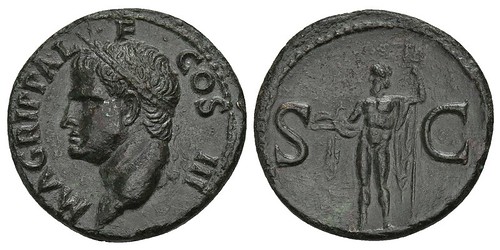
Gaius Caligula, 37-41 für Agrippa. Æ-As, Rom; 11,23 g. Kopf l. mit Rostralkrone//Neptun steht l. mit Delphin und Dreizack. BMC 161 (Tiberius); Coh. 3 (Agrippa); RIC² 58. Revers etwas korrodiert und geglättet, gutes sehr schön
A strong bust on a nicely centered coin. From the upcoming Künker eLive Auction 62 -Editor
To read the complete lot description, see:
Philip II Tetradrachm 
Eastern Celts. Philip II types. Tetradrachm (silver). Vs: head of bearded Zeus with laurel wreath on the right. Rs: Naked youth with palm branch on horseback riding to the right; under the horse a bundle of lightning, between the front hooves a torch. 24 mm. 12.82 g.
Another nice ancient. -Editor
To read the complete lot description, see:
Libertas Americana Medal 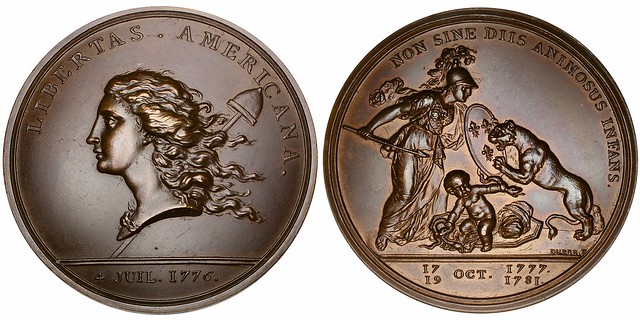
Designed in part by Benjamin Franklin, the popular "Libertas Americana" motif was thought of as emblematic of the fledgling, newly-established nation—wild and untamed, hopeful and, most importantly, free. Here, the allegorical Liberty exhibits free-flowing, unkempt hair, while a Phrygian cap—an ancient symbol throughout Thrace and Anatolia that later came to represent liberty—tops a pole over her shoulder. Continuing on as an iconic piece of iconography from early America, the design has been featured sporadically since, with the Paris mint offering copies utilizing the dies beginning with the bicentennial festivities in 1976, and various issues since in gold, silver, and bronze. While the more recent offerings feature thicker lettering and an antiquing that "feels" modern, early issues such as this are much more faithful reproductions of the original design, with more intricate detail and natural surfaces.
While "only" a 1980s reproduction, I'm not surprised that this gorgeous piece I noticed in Jeremy Bostwick's Numismagram inventory was sold before I could publish this issue. Great medal. -Editor
To read the complete lot description, see:
1781 Escape of the Dutch Fishing Fleet Medal 

1781 Escape of the Dutch Fishing Fleet Medal. Betts-574, Van Loon Supp., 554. Silver. Reverse 2. MS-62 PL (NGC). 31.5 mm. An outstanding example of the type, both sides are fully prooflike in finish, and readily appreciable as such in the absence of all but the lightest iridescent silver toning. Sharply struck with generally wispy handling marks precluding a Choice Mint State grade, although accuracy compels us to mention a couple of thin grazes in the upper obverse field close to the ship's rigging. This is a fascinating medal, commemorating the arrival of Jacob Van der Wint and his sailboat De Roode Roos (the Red Rose) at the Doggersbank in the North Sea, where the Dutch fishing fleet lay unaware that England had just declared war on the Netherlands. Van de Wint (also spelled Van de Windt) was something of a Dutch Paul Revere, letting the fishermen know that the British were coming and allowing them to return safely to port in January 1781. John W. Adams has discovered that this medal is actually known with two different reverses. This specimen uses what he calls "Reverse 2," identical to two Ford specimens and easily identifiable by the letter A in A.V.B. left of the digit 7 in the date 1781. The other variety, where the A is under the 7, was used to strike the LaRiviere and Adams specimens that we have also handled in past sales.
Great medal! Coming up in the November Stack's Bowers sale. -Editor
To read the complete lot description, see:
1871 David Rittenhouse Medal 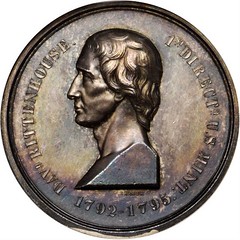
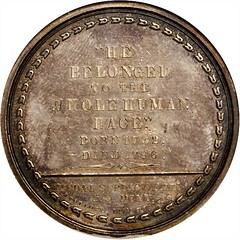
1871 David Rittenhouse Medal. By William Barber. Julian MT-1. Silver. MS-62 (NGC). 46 mm. This is a simply outstanding example of an elusive and historically significant type. Prooflike fields support satiny design elements, the obverse richly toned in iridescent olive-gray with pretty golden-apricot, salmon pink and cobalt blue undertones. The more lightly patinated reverse is dressed in light golden-olive iridescence that appears to drift toward the border. Sharply struck with only minor handling marks precluding a higher grade. Part of James Pollock's earnestly desired Medal Series of the U.S. Mint, this type is avidly sought by collectors today in honor of Rittenhouse's role in producing America's earliest coinage. Silver impressions are quite rare and, indeed, this is our first offering in this fabric in many years. According to our consignor, the American Philosophical Society has a letter of transmittal for their Rittenhouse medal, from the Mint's Chief Engraver William Barber and dated May 15, 1871, noting the American Philosophical Society bust of Rittenhouse was used as a model.
Another super medal, also from the November Stack's Bowers sale. -Editor
To read the complete lot description, see:
Two Interesting Notes 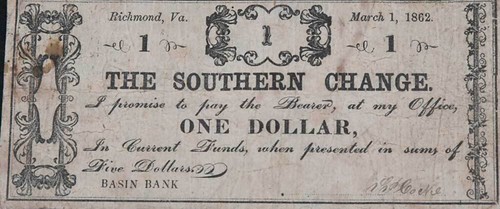

"Invade Cuba!" stamped Silver Certificate, Bay of Pigs reference; Short Snorter on Silver Certificate, some signatures legible; "The Southern Change" banknote, Richmond, 1862, issued by Sylvester P. Cocke; Confederate Poem on T-61 Confederate $2 note
These two notes caught my eye in a group lot at an October 23, 2020 Brunk Auctions sale. I used to collect Civil War era scrip notes, and the one dollar denomination is unusual - most were denominated in fractions of a dollar. And I've never seen a note with the INVADE CUBA overstamp. -Editor
To read the complete lot description, see:
THE BOOK BAZARREWayne Homren, Editor The Numismatic Bibliomania Society is a non-profit organization promoting numismatic literature. See our web site at coinbooks.org. To submit items for publication in The E-Sylum, write to the Editor at this address: whomren@gmail.com To subscribe go to: https://my.binhost.com/lists/listinfo/esylum All Rights Reserved. NBS Home Page Contact the NBS webmaster 
|